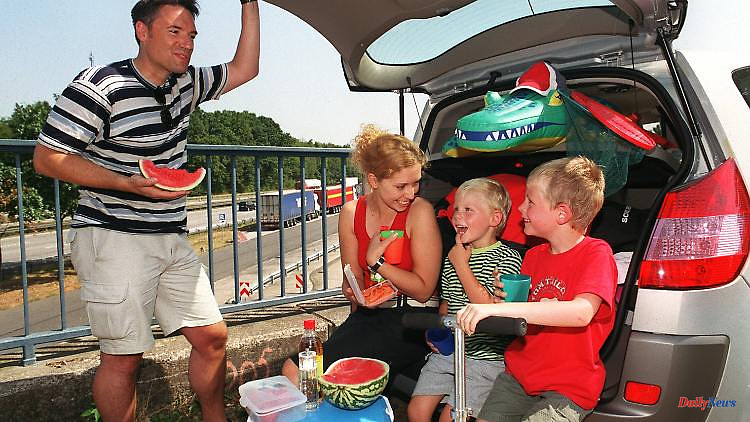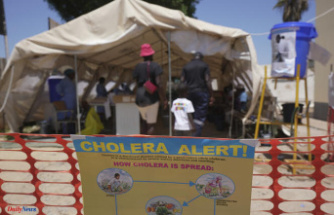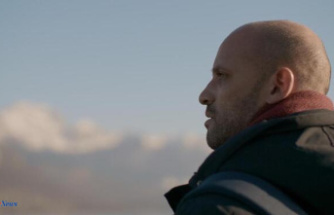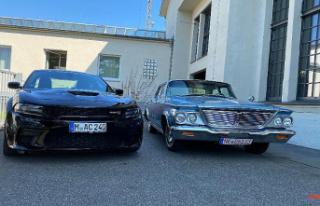The holiday is approved, the holiday home booked, nothing stands in the way of the car trip to the holidays - almost. Because before and during the trip there are a few things that you should definitely consider.
When it comes to correct behavior, it is easy to talk about "etiquette". There are also rules for driving on vacation. The most important points at a glance.
Check papers
Are the IDs still valid, does the HU not expire yet? "If you go abroad, you should definitely have a European accident report in the glove compartment," says Gerrit Reichel from the Automobile Club Verkehr (ACV). An important document, especially when it comes to regulating accidents abroad, that most car clubs offer for download.
In addition, travelers should pay attention to possible peculiarities in the destination country. According to the ACV, anyone who travels to Turkey, for example, needs an international insurance card. In addition, it is still helpful to find out about the current corona regulations from the Robert Koch Institute or the Federal Foreign Office.
Vehicle check before departure
This includes, for example, checking the level of oil or washer fluid, a functional check of the wipers and a visual inspection of the tires. The tread depth should still be at least 3 millimeters. Reichel has a tip for anyone who finds that too much work: "Many garages offer holiday checks for little money before and during the travel season."
Correct loading
Basic rule: Heavy parts come down. It is best to place heavy suitcases directly behind the seats in the middle of the vehicle. According to the testing organization Dekra, a roof box should only be used for bulky but light luggage.
If you are traveling with a roof box or rear luggage rack, you must also pay attention to the permissible load. For bicycles and pedelecs, accessories such as the basket or battery should be removed to relieve the rear or roof.
Dekra also advises defensive driving. A fully loaded vehicle has a longer braking distance, is more unstable, especially in curves, and overtaking maneuvers also take longer.
Prepared for emergencies
There are a few things you should definitely keep handy. Gerrit Reichel from the ACV says: "High-visibility vests, warning triangles and first-aid kits should not be at the bottom under all suitcases." It is best for each passenger to have their own high-visibility vest, as is required in many countries.
Technical check
Once everything is stowed in the car, the headlights and air pressure are checked after loading. According to Jeannine Rust from the Auto Club Europa (ACE), only then will it be clear "whether and how headlights and air pressure have to be adjusted".
check itinerary
When the car is ready to go, a look at the route follows. Is the route subject to tolls? Can I get a vignette in advance? According to Gerrit Reichel, automobile clubs are a good address, since in some countries the vignette is only issued in digital form. Cameras on the Autobahn then scanned the number plate to compare it with the vignette purchase.
Reichel also advises never to blindly rely on the navigation system when planning a route, but to know the route and the most important points without electronic help.
Adjust driving style
Jeannine Rust summarizes the rules: "Outside built-up areas, drive on the right applies. The outer left lane is only intended for overtaking. Anyone who drives on the left, even though everything on the right is free, also halves the capacity of the motorway and thus increases the risk of traffic jams".
The middle lane may only be used if a vehicle drives on the right every now and then. It is also not allowed to use the hard shoulder as a shortcut to the exit. Reversing or even turning around are also taboo, unless the police ask you to do so.
Step on the gas to save fuel
Fully loaded, the car accelerates and reacts sluggishly and fuel consumption increases. "100 kilograms add up to about half a liter per 100 kilometers at the pump," says Karsten Graef from TÜV Süd, a rule of thumb. Travelers should drive at a constant speed of 120 to 130 km/h and avoid frequent acceleration and heavy braking.
Correct driving style in traffic jams
If things get stuck on the freeway because one lane is blocked, it's time to let things slide in - using the zipper principle. According to Jeannine Rust from ACE, drivers who are in the lane with the obstacle stay there and only merge into the next lane immediately before the end. Otherwise you just clog them up.
In the same way, in their opinion, drivers should not immediately choose the alternative route suggested by the navigation system. Many devices delivered traffic jam warnings in real time. However, most use the same information, which means that motorists avoid the same detour - and the traffic jam shifts. Therefore: only drive off in the event of a full road closure or a traffic jam that is longer than ten kilometers.
Form a rescue lane early on
According to DEKRA accident researcher Markus Egelhaaf, many drivers react too late - only when emergency vehicles approach from behind. Instead: Keep an aisle free as soon as vehicles drive slowly or come to a standstill. Otherwise time would be lost through maneuvering. The far left lane then always deviates to the left, the others to the right.
Street is not a playground
"The lane must not be entered in traffic jams," says Karsten Graef from TÜV Süd. Getting out is only allowed to protect against an accident. "The legislature sees neither a human need nor diapering a child as an emergency," says the expert.
Plan meals
In order to avoid unnecessary interruptions, nothing should be missing. The ACV's list: enough food and drink, paper towels, reading material, a few games and a USB cable and adapter (USB-C) to connect tablets and smartphones.
childcare
If a stop is unavoidable, parents should not leave their children unattended in the car. TÜV Süd warns of scenarios like these: The car starts rolling, the key is in and the child is locked in.
Leave early
Families with young children should choose travel times when the little ones are asleep. A positive side effect of the early morning and late evening hours is the lower temperatures and mostly empty streets. Children up to the age of twelve or less than 150 cm tall require a child seat.
Regular and active breaks
TÜV Süd advises taking breaks every two hours to relax your arms and legs or to close your eyes for ten minutes. As little as 20 minutes can help you stay focused throughout the journey. If children are on board, a rest area with a playground is recommended.
keep Calm
If someone is jostling on the freeway, you shouldn't try to slow them down, says Jeannine Rust. This is extremely dangerous and vigilantism. Rather, she recommends informing the police and filing a criminal complaint. "Even driving up close and flashing the headlights can be interpreted as coercion."












